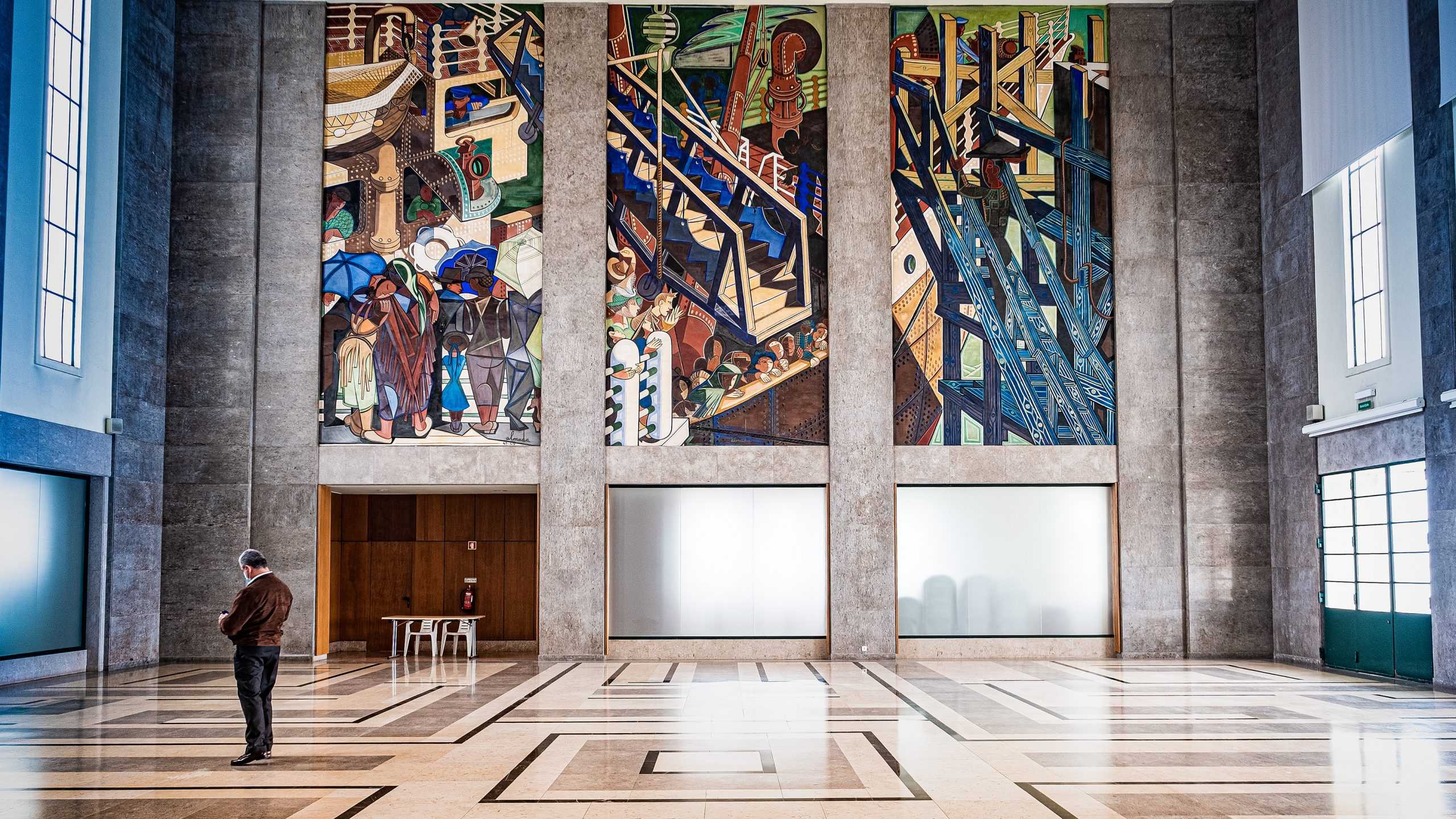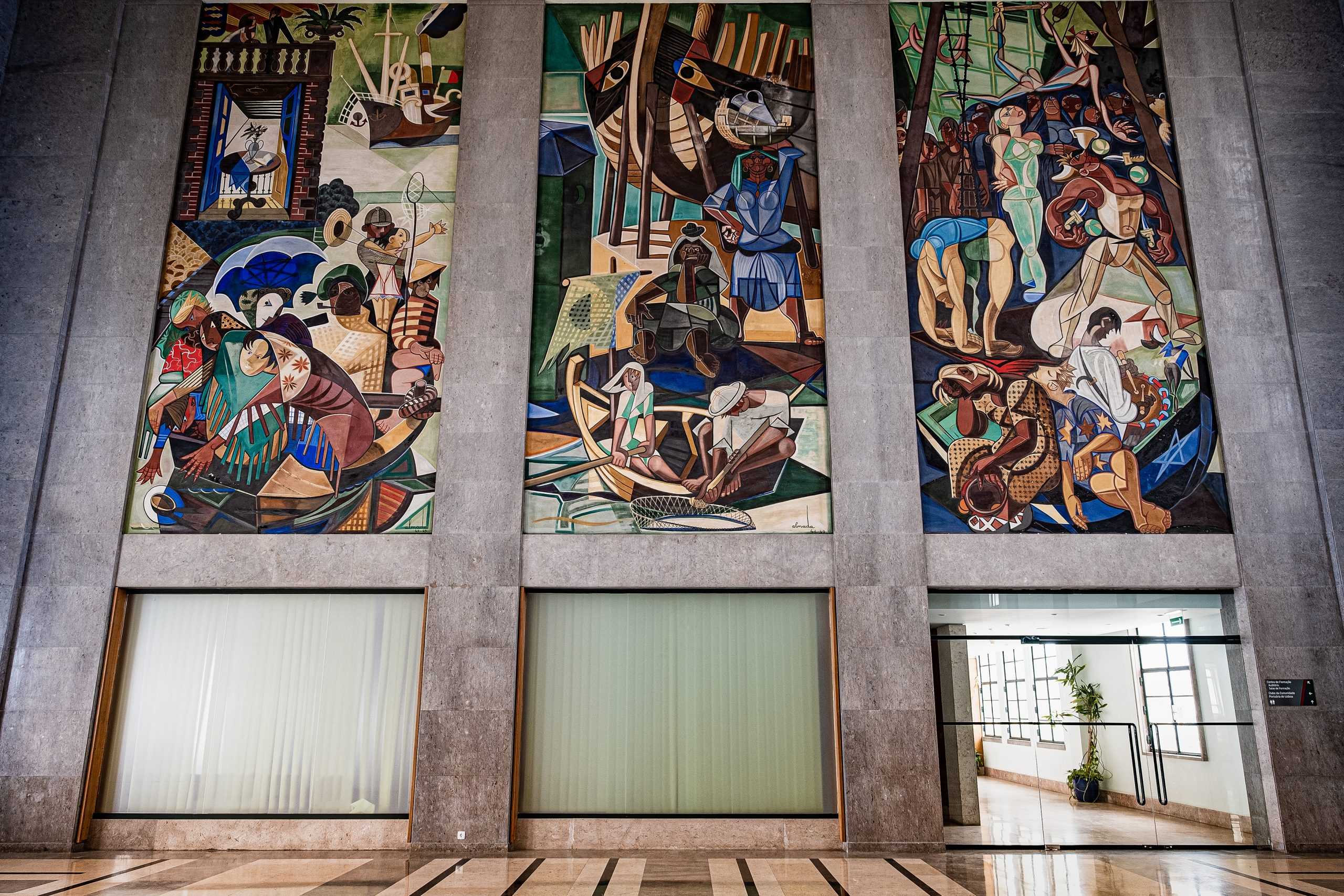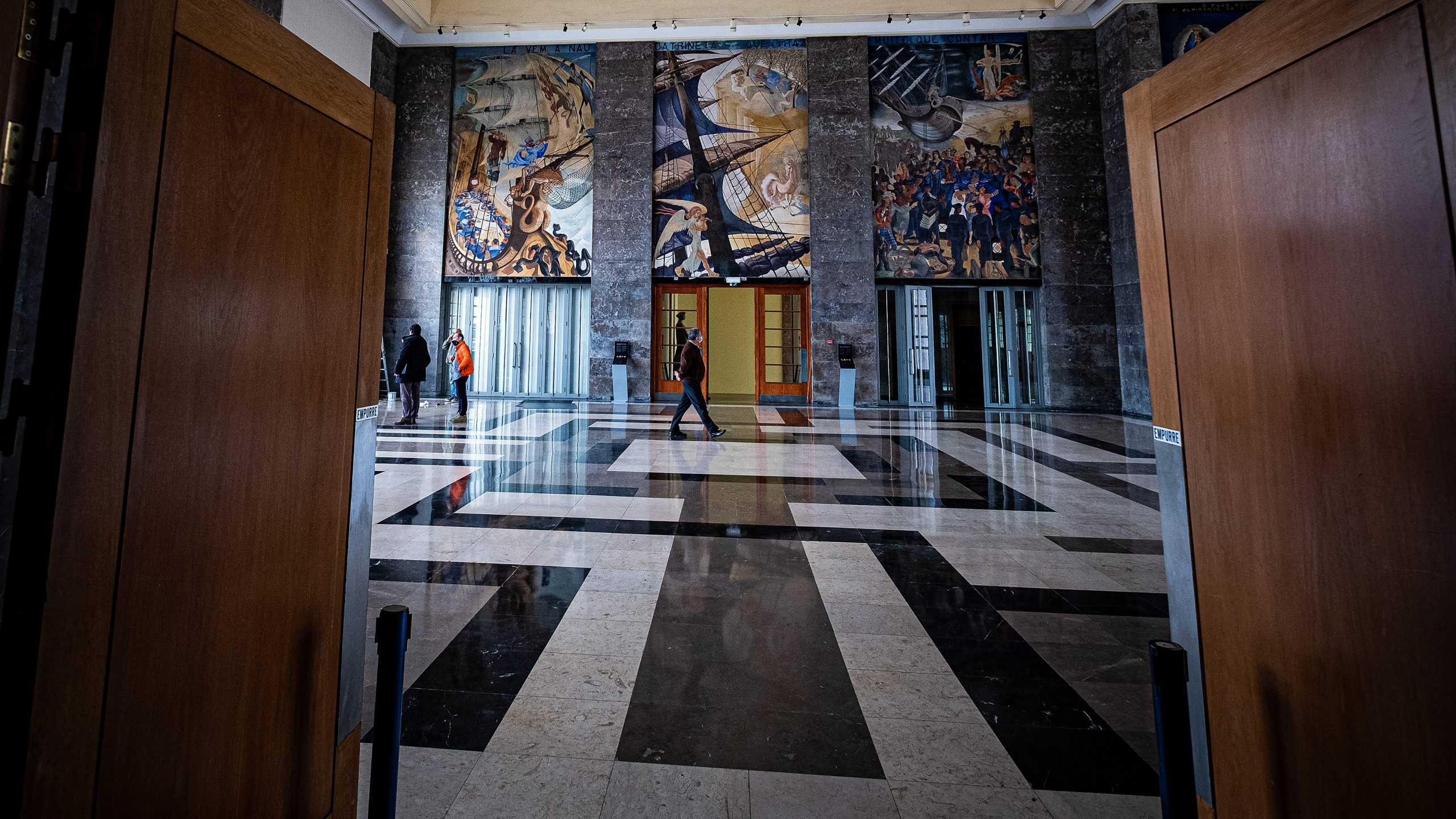The hidden secret panels of the Alcântara Marine Station
The first painting with a black person in a position other than subordinate, among a series of subversive and polemic drawings, these are the hidden secrets of the the Alcântara and Rocha do Conde de Óbidos maritime stations: a collection of panels drawn by Almada Negreiros, painter, writer, modernist artist, himself a São Tomé islands native, son of an Angolan mother.
The two stations are two imposing buildings that can be seen from the riverfront. They were designed by Porfírio Pardal Monteiro one of the most important architect of Lisbon in the Estado Novo regime. They were projected in the 1930s to modernize the Port of Lisbon - a long overdue project. The stations were inaugurated in the following decade - and so were the controversial panels.
On the panels at the Alcântara Maritime Station, Almada drew the stories of Portugal and the Discoveries: the legend of the Nau Catrineta and the miracle of D. Fuas Roupinho, which were the subject of great controversy for the Estado Novo regime. But there was even more controversy with the triptychs of the Rocha do Conde de Óbidos Maritime Station, showing the poor life of the docks’ people and exposing the drama of the departure of many migrants - who in these years were heading portuguese African colonies. This was something unthinkable for the regime, which had asked that the stations showed a positive vision of the city to tourists. To those who arrived and not to those who left.

These second collection of paintings - drawn five years later - were at risk of being erased. This was not done because of a last minute intervention from the sensitive art director of the Museum of Ancient Art at the time, João Couto, who was able to convince the authorities that these were benign stories, about tourists coming to town.
The Gares and the panels were testimony of the departure of soldiers for the Colonial War, the arrival of the Portuguese from the colonies, in the 70’s and, before that, of the passage of those fleeing Nazi Europe - many of those who ask to visit today are Jews and descendants.
Almada Negreiros' panels bear witness to it all, also. For historian and art critic José Augusto França, they are "the masterpiece of Portuguese painting from the first half of the century”.
Monument of Public Interest since 2012 and one of the 25 world places to preserve according to the World Monuments Fund (WMF) the panels are being restored, with the HERCULES laboratory of the University of Évora.
There have already been some interventions, which have revealed interesting details: in one of the panels at the Gare Marítima de Alcântara, a woman dressed in white sleeves is leaning over a basket of fish. But it turned out that the white was originally... white with yellow stripes and fleur-de-lis designs!
The buildings are open to the public one weekend a month, and can be visited by appointment.
By Ana da Cunha



